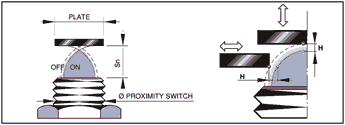- 5mm U-shaped photoelectric sensor
- New Metallic label capacitive Fork Label sensor S-4200
- Regarding label sensors
- Ultrasonic Sensor Theory and application
- Regarding Fiber Optical Sensor
- What is a Photoelectric Sensor
- Sticker labeling machine for bottle beer application
- Metallic label sensors s-4200 series
- Operating principles for capacitive sensor
- Operating principles for photoelectric sensors
- E-mail: samuel#sunland-auto.com
- Please change # to @
- WeChat: s-sensors
- Skype: +86 18688621237
Capacitive proximity sensors are used for non-contact detection of metallic objects & nonmetallic objects (liquid, plastic, wooden materials and so on). Capacitive proximity sensors use the variation of capacitance between the sensor and the object being detected. When the object is at a preset distance from the sensitive side of the sensor, an electronic circuit inside the sensor begins to oscillate. The rise or the fall of such oscillation is identified by a threshold circuit that drives an amplifier for the operation of an external load. A screw placed on the backside of the sensor allows regulation of the operating distance. This sensitivity regulation is useful in applications, such as detection of full containers and non-detection of empty containers. The operating distance of the sensor depends on the actuator shape and size and is strictly linked to the nature of the material.

(Table 1)
| Table 1. Sensitivity when different materials are present. Sn = operating distance. | |
| Metal | ~ 1 x Sn |
| Water | ~ 1 x Sn |
| Plastic | ~ 0.5 x Sn |
| Glass | ~ 0.5 x Sn |
| Wood | ~ 0.4 x Sn |
- Home - About us - New products - News - Download - FAQ - Feedback - Contact us - Sitemap
- All rights received by s-sensors
 |
 |
 |
| Add Wechat as contact | Add WhatsAPP as contact | Add Skype as contact |





 2017-6-26
2017-6-26